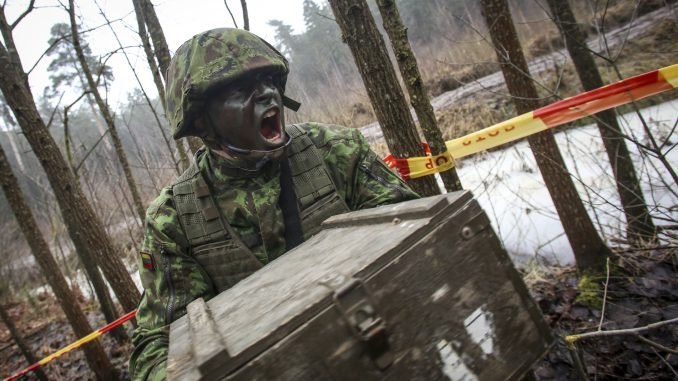
The National Defence Council (NDC) met at the Presidential Palace to discuss security and defence issues. After the meeting, the participants announced that it had been decided to create a Lithuanian division because the Russian threat is not diminishing, and the Russians are planning new military transformations in Kaliningrad, Jūratė Važgauskaitė is writing to the tv3.lt news portal.
After the meeting, it was announced that a division would be created in the Lithuanian army. Additional funding will be made available for this, and allied support will be sought for those parts of the division that we cannot buy (air defence, etc.).
The division by 2030
“The PSC stated that after assessing the threats, the projected baseline scenario for the Russian forces’ reintegration, in line with NATO’s regional defence plans, a decision has been taken to approve the proposal from the Minister of National Defence to create a division-size unit in the ground forces,” presidential adviser Kęstutis Budrys told a press conference.
According to him, the division could be formed as early as 2030.
“The aim is to have a fully operational division in Lithuania by 2030, with the support of allies, which could carry out defence operations as conceived and fulfil the idea envisaged in the collective defence documents”, he said.
K. Budrys added that a division-sized unit in the security forces would reflect the realities and defence needs. However, this would require human, financial, and all other resources.
He said that, in addition to the defence funding, which currently stands at 2.25% of GDP, there will be additional funds for improving infrastructure and the creation of the division. This is expected to be in place by 2030. Indeed, we will not do without the help of our allies.
“We will have to talk to our partners about enabling support, air defence, and other important elements that we do not yet have,” said Budrys.
He stressed that even today, the Chief of Defence and the Minister of National Defence have been asked to provide information on military training areas, training ranges and other places suitable for training, as more of them will be needed.
K. Budrys explained that the creation of the division is a national decision of Lithuania. Therefore “at this stage, the involvement of other forces is not being considered”.
However, the need for a German brigade in Lithuania, he said, is also being intensively worked on.
“The decision to create a division is a national one. First of all, it would be about the two brigades we have and one reserve brigade, i.e. three manoeuvre brigades, our national brigades, and there is no consideration at this stage about the inclusion of any other forces,” said Budrys.
Will there be a tank battalion?
Defence Minister Arvydas Anušauskas explained after the PSC meeting that the division is being created in Lithuania after considering Russia’s regional plans, as they have plans in our neighbourhood.
“Therefore, the creation of a division would be important in the overall hierarchy of the NATO military forces, and it would also be a matter of making the division heavier, creating a tank unit up to the size of a battalion. Some of the weapons being acquired are already at the divisional level: HIMARS, French Caesar self-propelled wheeled howitzers, Wolf infantry fighting vehicles, unmanned aerial vehicles, combat drones,” the Minister said.
He explained that the German brigade expected in Lithuania would not be part of this division.
According to the Minister, in the current war in Ukraine, the division is the main unit of manoeuvre, and its creation in Lithuania will ensure better interaction with NATO and the realisation of defence plans.
The National Defence Council met on Monday to discuss support for Ukraine, the synchronisation of electricity grids and other security issues.
The agenda also included the development of the structural and military units of the national defence system and the need for military training grounds and training areas.
In Lithuania, a test of the isolated operation of the country’s electricity system took place at the end of April, which, according to the Presidency, brought the country’s electricity grid closer to synchronisation with Western Europe.
Lithuania aims to complete synchronisation with continental European grids in 2024, but Latvia and Estonia want to stick to earlier agreements to connect to Europe in 2025.
The European Commission considers the synchronisation of the Baltic electricity grids to be an important political and financial priority and has allocated more than €1.2 billion for the project.


Be the first to comment